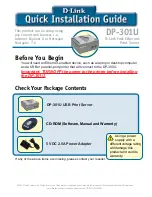
38
Chapter 3: Maintenance and Component Installation
System Fans
The system employs two 4-cm counter-rotating fans. Each fan unit is made up of two fans
joined back-to-back, which rotate in opposite directions. This counter-rotating action generates
exceptional airflow and works to dampen vibration levels.
The fans can adjust their speed according to the heat level sensed in the system, which
results in more efficient and quieter fan operation. Fan speed is controlled by IPMI. Each fan
in a set has its own separate tachometer.
If a fan fails, the remaining fans will ramp up to full speed and the overheat/fan fail LED on
the control panel will blink on and off. Replace any failed fan at your earliest convenience
with the same type and model (the system can continue to run with a failed fan).
Note:
The chassis top cover must be installed for proper airflow.
Replacing System Fans
1. Determine which fan has failed using IPMI, or if necessary, open the chassis while the
system is running. Never run the server for long without the chassis cover.
2. Power remove power from the system as described in Section 3.1.
3. Detach the fan wiring then grasp the failed fan unit and lift it out of the chassis.
4. Push the new fan into the housing making sure the arrows on the top of the fan,
indicating air direction, point in the same direction as the arrows on the other fans.
5. Reconnect the fan wires to the same chassis fan headers.
6. Power up the system and check that the fan is working properly and that the LED on the
control panel has turned off. Finish by replacing the chassis cover.
FIgure 3-5. Installing Fans
















































